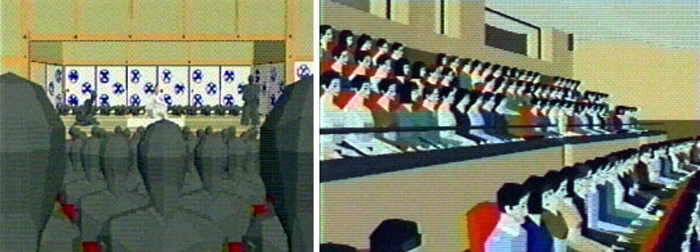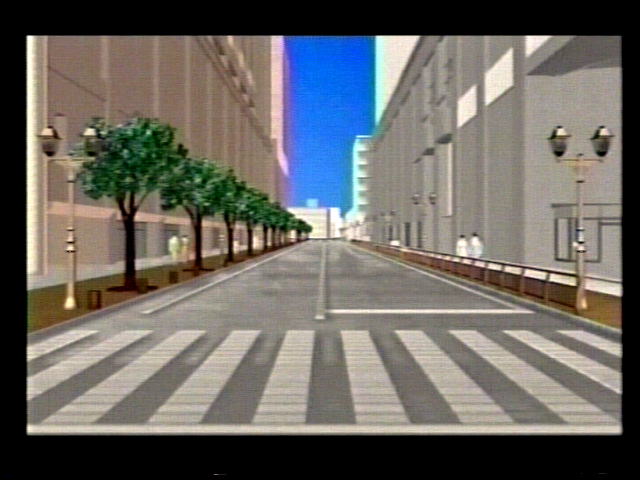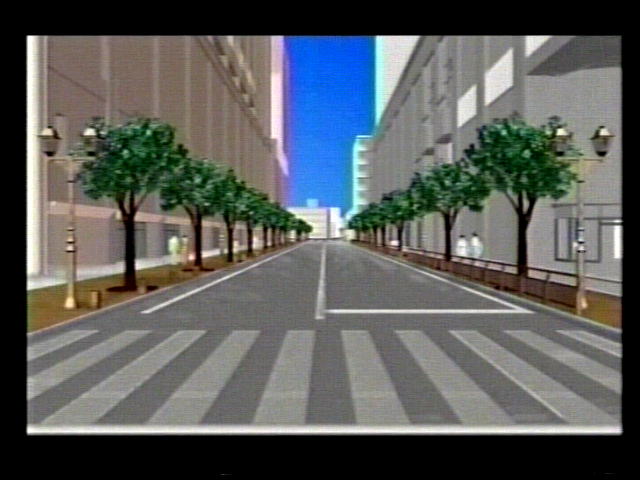| How
I used CAD & CG in my work & hobbies From the viewpoint of both virtual reality & reality and abstraction & concreteness by Shunya Susuki April 2004 |
||
| I have
been in charge of building administration in Fukuoka City for 23 years. In
terms of my job, my first involvement with computers was when I compiled the report on the computerization of building
confirmation service, later called "The building Confirmation Support System" during
my assignment in the Ministry of Construction Building Instruction Section
in 1985. Subsequently I was engaged in the construction of Asian Pacific
Exposition and the Fukuoka Software Research Park. I began to use CAD &
CG in earnest during 1995-99 when I was involved in the construction of
"Hakataza", a theater for Kabuki and musicals. |
||
| * The experience of making sculpture (reality) was useful for the making of virtual space * | ||
| Public
halls built in those days did not have good reputation for the arrangement of seats
and the illumination room from which the audience had difficulties to look at
the stage. Therefore, in the case of Hakataza, I made a virtual theater space
by CG software in advance to check it. I first produced 1,500 models in PC
based on the figure of an average Japanese man as the audience, but the PC
didn't work smoothly. So I decreased the number of the model's polygons while
keeping its outline and made approximately 30 representative models. My
experience of sculpting as a hobby was useful for abstracting the models in PC. |
||
 |
||
| The view check from all the seats, the illumination room, and etc. in the
virtual space made possible the construction of a theater with viewable sitting arrangement, and cost reduction by preventing
renovation. Furthermore, the CG animation to study the neighboring areas
made a significant contribution in forming mutual consent between the people
concerned. I used these data as good examples for cost reduction and means
to promote CALS/EC (Integrated information support system for public works). |
||
  |
||
| The image above shows the CG for studies of the row of trees around the Hakataza | ||
| From my experience in projects such as the Asian Pacific Exposition that
required coordination with a lot of people concerned, I learned that large-scale
city planning projects that need mutual consensus with the residents require
the sense of sociality and cooperativeness. Meanwhile, in paintings &
sculpture, the creator is expected to show his/her originality. The greatness
of CAD & CG is that one can fulfill both requirements. I think that in future, there will be a need for a structure in which people concerned will be allowed to enter into the project plan (CG) through the Internet and have a virtual experience like the movie "The Matrix". With CAD & CG one can set the size freely and simulate the design of the interior of a building in detail. I believe CAD & CG will be regarded as an important technology in future. |
||
 |
||
| * Inspection in the virtual space was useful for making my kite (reality) * | ||
| While my experience (reality) in sculpture was useful for modeling (virtual),
my experience in modeling was useful for producing kites. The more the
shape of the kite becomes close to the original figure, the heavier it
becomes because more materials such as thin bamboo and thin woods are used,
thus eventually making it unable to fly. It is similar to the example of
Hakataza when my PC didn't work since the models were too concretized and
its data grew big. When I produced the whale kite, my latest production,
I checked its shape by the modeling software. I have already produced four
solar electric cars in the hope to contribute to reducing air pollution.
Even in the case of the new car which is now being produced, I am considering
the shape by repeatedly modeling and rendering by PC. |
||
| celestial Maiden Kite | Whale Kite | Solar Electric Car S-5 |
| The key to use CAD & CG is to abstract data to make it as light as possible, no matter how much PC advances. Generally speaking, the more the level becomes infinite or infinitesimal, the more the technique to abstract data becomes acceptable as the virtual world. However, as hardware develops, more technique to concretize actual events will be required. The key to use CAD & CG is to introduce the technique to abstract the real world. I would like to grope for the technique to abstract the real world by studying the field of art such as painting and sculptures in future. | ||
| This was published by the CAD & CG magazine June, 2004 issue | ||
| To Earth Friendly | ||